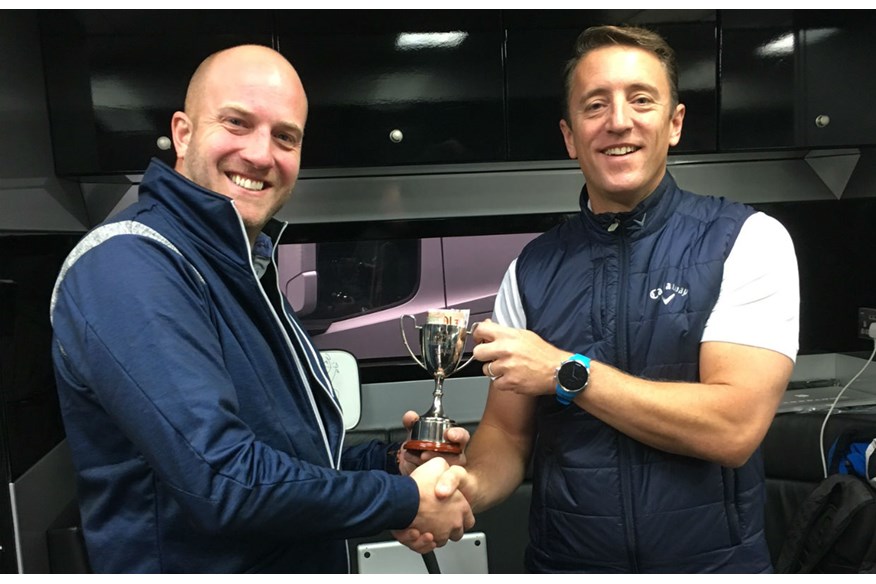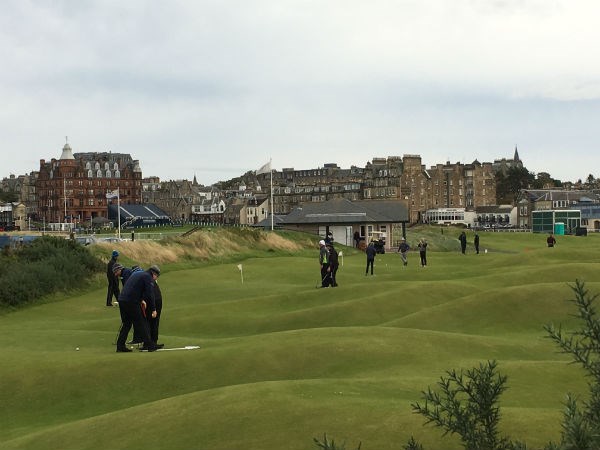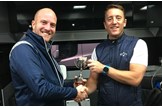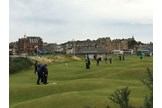The Willett-Dent Thrash: A tribute to the first European Tour Manufacturers
Last updated:
How much do you know about where the Tour Trucks originated on the European Tour?
With the backdrop of The Old Course, St Andrews at the Dunhill Links this week, manufacturers on the European Tour commemorated the men responsible for their vocations – a fitting tribute to a tradition that started at the home of golf.
Tour trucks have been a staple for so many years now you might never have considered they didn’t accompany the Tour until 1980’s – but those that work on them certainly haven’t.
Each year, everyone that works on the Tour trucks put aside their brand names and come together for a putting competition known as ‘The Willett-Dent Thrash’. The trophy, I’m told, was born a few years ago after the passing of the Tour’s first official club-maker, Barry Willett.
Originally the contest began over nine holes of golf, with 18 once being played on Celtic Manor – but as the amount of people playing in it grew, it became harder to organise: hence the birth of a putt-putt version in Portugal.
This year, the contest was held over The Himalayas putting green during The Alfred Dunhill Links practice day – and although the trophy may be small in stature, it’s purpose is not. Each player puts in £20 as a fee, and the winner of the trophy is allowed to donate a portion of the winnings to charity of his choice.
In the case of the 2017 competition, it was won by Callaway Tour Truck Technician Paul Monks (pictured above)
Who were Barry Willett and Pat Dent?
Before tour trucks were invented, players would visit a man named Barry Willett – a clubmaker at St Georges Hill – prior to competitions, but once they made it to a tournament they were restricted to services offered by local professionals.
Due to the high demand on his services, Neil Coles (chairman of the European Tour) and Barry Willett set up what they named a ‘temporary work-shop’ based out of a caravan during the 1984 Open at St Andrews – a first on Tour. So popular was it that Coles was persuaded to create a mobile facility that could follow players on the European Tour, although he needed a major sponsor.
Coles approached the increasingly popular golf brand Mizuno, who quickly embraced the idea as the perfect way to launch their brand in Europe – and the idea was born in to reality in 1986. Willett was to be the chief clubmaker (with the support of two Japanese technicians), and Pat Dent was hired as the driver.
Willett and Dent, along with various Japenese technicians over the years, quickly turned in to a permanent fixture on the tour, working under the title of ‘The Official European Tour Workshop’. They provided a service to all players (including the likes of Nick Faldo and Seve Ballesteros) – regardless of their sponsorship of equipment deals and affiliations.
When the demand became overwhelming on the manufacturers, Mizuno understandably began to prioritise their own players first – proving the need for further trucks to be allowed on tour.
Since then, Tour trucks from both club and ball manufacturers followed suit – and while now it has been scaled down since due to the size of trucks and space available at venues – they have become a big part of tournament infrastructure in Europe (at least the ones they can get to).
Willett retired in 1998 after the BMW PGA Championship at Wentworth, and sadly went on to battle a long term health struggle with diabetes, passing away in 2008 (the same year as his friend Dent).
Now, the Mizuno truck is manned by Mizuno Tour Operations manager Alex Thorne, and it gets to roughly 25 events a year – it would be more, but as some European Tour events take place in South Africa, Australia and Asia, they are unable to get to them.
And although there may now only be about four people on the Tour trucks who actually knew Barry or Pat – they still all come together once a year to remember the men who started it all, as all those working in that part of the golf industry are keen to commemorate the men that made it possible.



